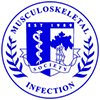Authors: Clauss M, Trampuz A, Borens A, Ilchmann T; Liestal, Switzerland
Title: In vitro evaluation of Staphylococcus aureus biofilm formation on bone grafts and bone substitutes
Purpose: Bacteria form a biofilm on the surface of orthopaedic devices, causing persistent and infection. Little is known about biofilms formation on bone grafts and bone substitutes. We analyzed various representative materials regarding their propensity for
Methods: As bone graft beta-tricalciumphosphate (b-TCP, CyclOsTM) and as bone substitute a tantalum metal mesh (trabecular metalTM) and PMMA (PalacosTM) were investigated. As test organism S. aureus (strain ATCC 29213) was used. Test materials were incubated with bacterial solution of 105 colony-forming units (cfu)/ml at 37°C for 24 h without shaking. After 24 h, the test materials were removed and washed 3 times in normal saline, followed by sonication in 50 ml Ringer solution at 40 kHz for 5 minutes. The resulting sonication fluid was plated in aliquots of 0.1 ml onto aerobe blood agar with 5% sheep blood and incubated at 37°C with 5% CO2 for 24 h. Then, bacterial counts were enumerated and expressed as cfu/ml. All experiments were performed in triplicate to calculate the mean±standard deviation. The Wilcoxon test was used for statistical calculations.
Results: The three investigated materials show a differing specific surface with b-TCB>trabecular metal>PMMA per mm2. S. aureus formed biofilm on all test materials as confirmed by quantitative culture after washing and sonication. The bacterial counts in sonication fluid (in cfu/ml) were higher in b-TCP (5.1 x 106 ± 0.6 x 106) and trabecular metal (3.7 x 106 ± 0.6 x 106) than in PMMA (3.9 x 104± 1.8 x 104), p < 0.05.
Discuassion and Conclusion: Our results demonstrate that about 100-times more bacteria adhere on b-TCP and trabecular metal than on PMMA, reflecting the larger surface of b-TCP and trabecuar metal compared to the one of PMMA. This in-vitro data indicates that bone grafts are susceptible to infection. Further studies are needed to evaluate efficient approaches to prevent and treat infections associated with bone grafts and substitutes, including modification of the surface or antibacterial coating.

